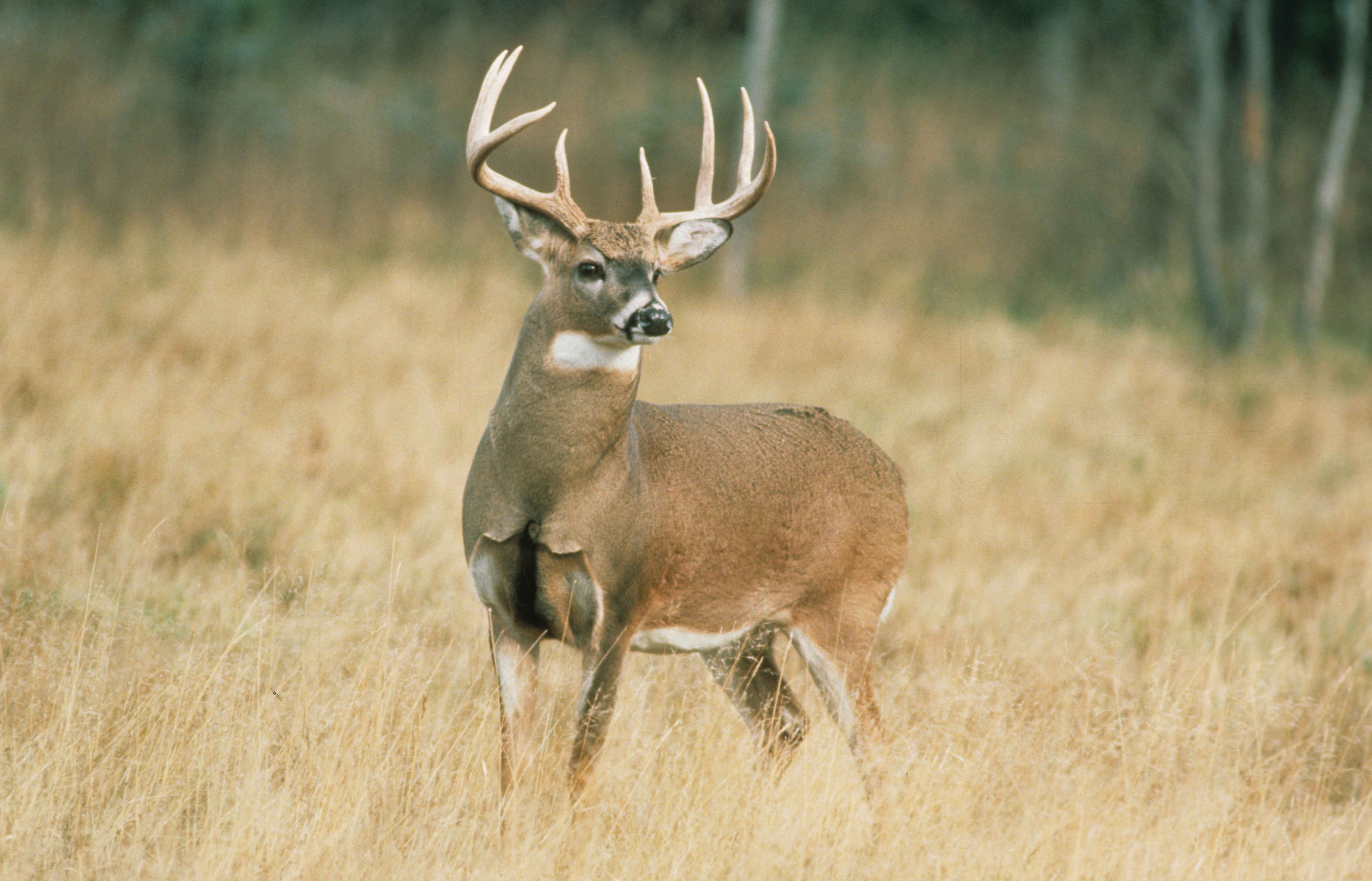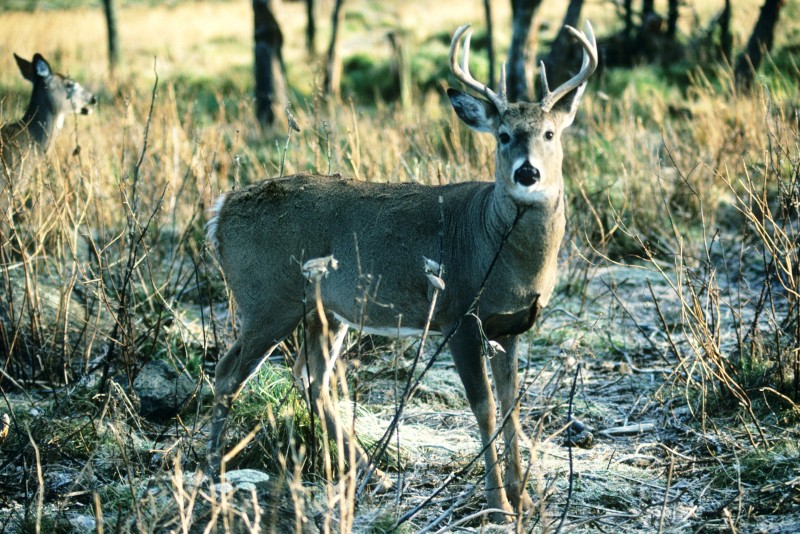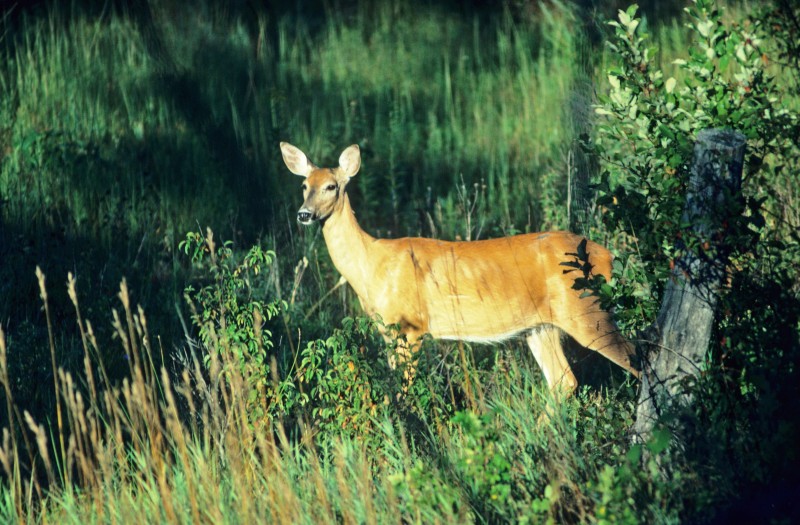10 Things You Must Know about Deer Senses
Daniel Xu 11.09.15

Many hunters have at some point or another run into a deer that perplexed them. Whether you’re sitting in a treestand or moving slowly and carefully on the ground, there are few sights more heartbreaking than when a buck picks his head up, turns his ears around, and is already over the hill before you realize what happened.
Deer must have great senses, right?
Deer have specialized senses that increase their odds of survival, but they’re not necessarily “better” than our own. Here are 10 basic but useful facts about deer senses for you to mull over the next time you find yourself sitting in a treestand.
1. Deer have a visual acuity five times worse than humans
Arguably the most important of senses for many land mammals, eyesight in deer have been a topic of debate by hunters for years. It was not so long ago when it was commonly thought that deer have “super vision” and could spot a hunter moving through dense brush and in blaze orange a mile away. These days, hunters have a more realistic perspective on how well deer can see.
The truth is that that deer have amazing eyesight, but that is tempered by a number of disadvantages that evens the playing field when it comes to facing off against humans. For example, deer are believed to have poor depth perception, are unable to distinguish certain colors well, and perhaps most surprisingly, cannot distinguish fine details at long distances.
According to a 2007 study from researchers at the University of Georgia, deer have a visual acuity of 20/100. That means that humans will see the same amount of detail out at 100 feet that deer see at 20 feet.
2. Deer are better at spotting movement and seeing at night
While deer may not be able to see as many details as we can, they are much better at detecting movement and seeing at night. This is suitable for a prey species, as they constantly have to be vigilant for predators.
Humans detect and track movement by following it with their eyes, directly focusing on the object. This is due to the high concentration of cones in our eyes on one focal point. Deer, on the other hand, have a horizontal concentration of cones across their eyes, allowing them to pick up and track movement without having to move quite as much.
Deer eyes also pick up much more light than ours do, giving them superior night vision.
3. Deer have a wide field of vision
Something you’re sure to have noticed is that deer eyes are placed much differently than humans. Since their eyes are on the sides of their face, deer actually have a field of vision of about 300 degrees, leaving only 60 degrees for a blindspot. This expansive view allows deer to better scan the distant horizon for predators, and maybe spot the occasional bowhunter as well.
4. Deer focus on yellow and blue, but have difficulty with red and orange
This is one you more than likely already know. After all, there is a reason you wear blaze orange instead of blaze blue. Color vision is based on photopigments in the rods and cones of the retina. Humans have three photopigments that are sensitive to red, blue, and green, hence why we consider these as primary colors. Deer are only sensitive to blue and green, like many other animals, so they tend to have problems distinguishing red and orange.
LEARN MORE about deer eyesight in this infographic.
5. Deer can smell 1,000 times better than you can
Depending on which study you read, deer can smell 100 times, 1,000 times, or even 10,000 times better than that of the average human. This is more or less true since deer have about 1,000 times more olfactory receptors than a human. In fact, smell is a deer’s most acute sense.
6. Deer can smell you a half mile away
Under the right conditions, a deer will smell you coming from half a mile away. It may sound daunting, but this is actually easier to defeat than it sounds. After all, few hunters would be bagging deer if the creatures ran away at the first whiff of trouble. That’s because the whiff doesn’t even get there in the first place. With proper observation of the wind and scent control, hunters can even sneak up close enough to poke a deer in the tail.
7. Deer can process smells better than we can
Deer can process up to six different smells at any one time. There is a special organ on the roof of their mouth, the Jacobson’s organ, that acts as a second nose. Deer also devote a larger part of their brain than humans to analyze smells. All this put together means that deer are able to identify smells much better than the average human.
There have even been reports that bucks can smell a doe’s pheromones from a full mile away.
8. Deer don’t really hear better than us, most of the time
According to several recent studies, deer have about the same hearing that we do. While that may be hard to believe, deer and humans both hear best in low to mid-range frequencies. That is why many deer vocalizations, such as grunting, are in this range. Sounds that fall within this range are received at the same intensity by deer as they are by humans. If you start coughing thanks to a cold, its likely that your buddy 100 feet away will hear it at the same noise level as a deer 100 feet away.
However, deer are much better in recognizing sounds that don’t belong. Think of it this way: deer live in the woods their entire lives, and they are pretty good at recognizing what sounds belong and which ones don’t. A human cough is about as foreign to them as a whale vocalization would be for us.
9. Deer can detect high-frequency sounds
One area where deer do have the advantage over us is their ability to hear high-frequency sounds we can’t. This means that if you start scraping two pieces of metal together, those high-frequency noises you won’t really notice will have already sent the deer running off two minutes ago. Still, even this is only a minor advantage, and deer can only detect high-frequency sounds slightly better than most humans.
10. Deer have the advantage of adjustable ears
The most powerful advantage deer have when it comes to hearing is their funnel-shaped ears. These are designed specifically to pinpoint sounds and locate threats, so if you see a deer point its ears at you, odds are you have already been noticed. Try as we might, we can’t exactly rotate our ears on the fly like deer can.



